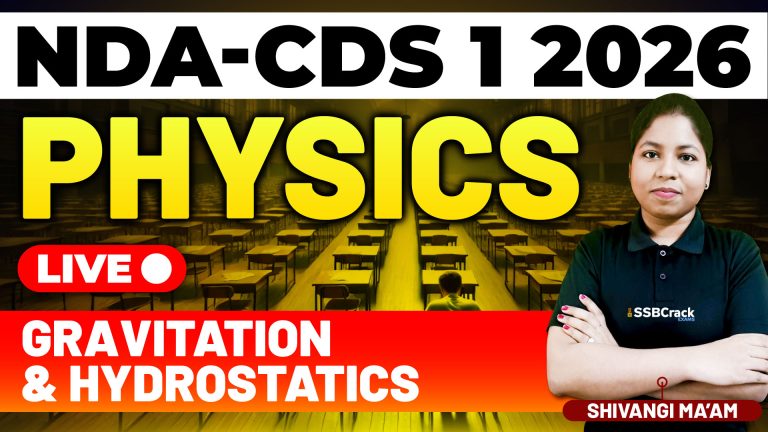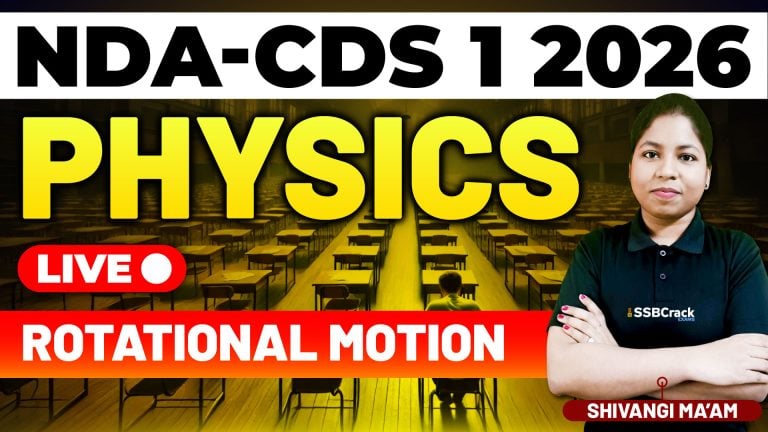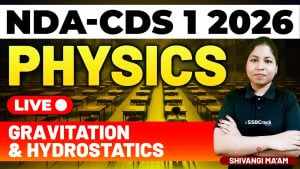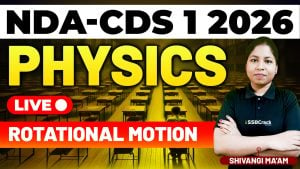Trigonometry holds a vital position in the Mathematics section of the Combined Defence Services (CDS) Exam, offering a mix of logical reasoning and mathematical computation. A recent class focused on essential trigonometric formulas and their applications to triangles, equipping students with tools to solve a variety of problems efficiently.
This blog provides an overview of the topics discussed in the session and offers actionable strategies to help aspirants prepare this topic thoroughly for the CDS Exam.
Key Topics Covered in the Class
The session was structured to provide a blend of theoretical knowledge and practical application, with a focus on solving problems using trigonometric concepts.
1. Important Trigonometric Formulas
- The class began by revisiting essential formulas, including those for compound angles, double angles, and half-angles.
- These formulas are crucial for solving advanced problems efficiently, especially when simplifying expressions or proving equalities.
2. Properties of Triangles
- Sine Rule: This rule relates the sides and angles of a triangle, offering a systematic approach to solving problems involving non-right triangles.
- Cosine Rule: The cosine rule provides a method to determine unknown sides or angles in a triangle, particularly in cases where the Sine Rule cannot be applied directly.
- Area of a Triangle: Various methods to calculate the area of a triangle, including those based on trigonometric concepts, were discussed.
Strategies to Master Trigonometry for CDS Exams
1. Understand the Basics Thoroughly
- Start by understanding the foundation of trigonometric functions and their relationships.
- Build a clear mental picture of how these formulas and rules apply to triangles.
2. Memorize Key Formulas
- Create a concise list of important trigonometric formulas.
- Regularly revise these formulas to ensure quick recall during the exam.
3. Solve Diverse Problems
- Work on problems involving the application of the sine and cosine rules, as these are commonly tested.
- Practice calculating the area of triangles using different methods to gain confidence.
4. Visualize Problems
- Draw diagrams for triangle-related problems to better understand the relationships between angles and sides.
- Visual representation often simplifies complex problems.
5. Use Past Year Papers
- Analyze previous CDS Exam papers to identify patterns and frequently tested types of questions.
- Focus on solving these questions under timed conditions to simulate the exam environment.
6. Apply Shortcuts Judiciously
- Learn and practice shortcuts for solving common trigonometric problems, but ensure they do not compromise accuracy.
Common Challenges and How to Overcome Them
1. Forgetting Formulas
- Solution: Regular revision and practice are essential. Use mnemonics or other memory aids to remember formulas effectively.
2. Misinterpreting Triangle Properties
- Solution: Always revisit the basic properties and rules before solving advanced problems.
3. Errors in Angle Identification
- Solution: Pay close attention to the given angles and their relationships to sides in the problem.
4. Time Management
- Solution: Practice solving problems quickly without sacrificing accuracy by using mock tests and timed exercises.
Conclusion
The recent class on Trigonometry was an engaging and insightful session, equipping students with essential tools to tackle problems involving triangles and trigonometric concepts. Topics such as important formulas, the sine and cosine rules, and the area of triangles were covered extensively, providing a strong foundation for aspirants.
To excel in this section of the CDS Exam, consistent practice, a solid grasp of concepts, and familiarity with problem-solving techniques are crucial. By incorporating these strategies into your preparation, you can turn Trigonometry into a scoring area.
Stay focused, practice diligently, and approach the exam with confidence. Best of luck on your journey to success in the CDS Exam!



















